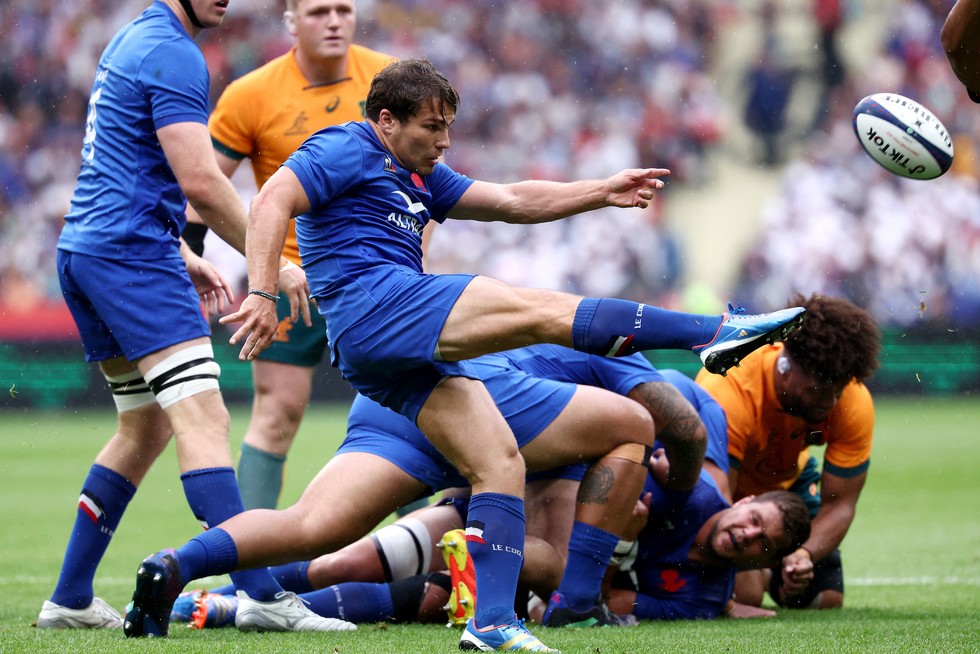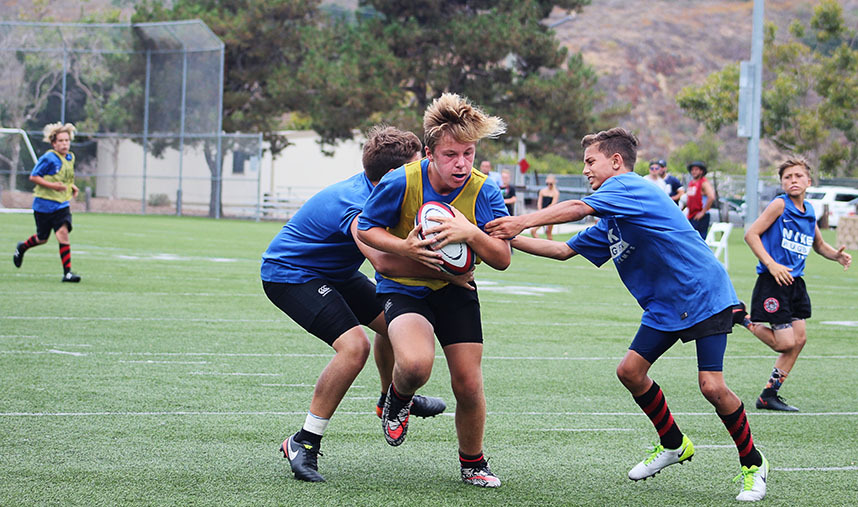I. Introduction
A. Importance of understanding the duration of a rugby game: Understanding the duration of a rugby game is essential for players, coaches, and fans alike. It provides a sense of structure and enables effective game management and preparation. Additionally, knowledge of the factors influencing match length allows for a better understanding of the game and its dynamics.
B. Overview of what will be covered in the article: This article aims to explore the factors that influence the duration of a rugby game. It will examine the regulation game time, including the standard match duration and considerations for halftime and added time. The article will also delve into gameplay factors such as stoppages, time-outs, penalty kicks, and scrums, which can impact the length of a match. Furthermore, external factors like weather conditions, injuries, and medical interventions will be discussed. Lastly, variations in match length between professional and amateur rugby, as well as the flexibility in scheduling, will be explored.
II. Factors Influencing the Length of a Rugby Game
A. Regulation game time:
- Standard match duration: The article will outline the standard match duration for rugby games, which typically consists of two halves. It will highlight variations in match lengths between different levels of play and competitions.
- Halftime and added time considerations: This subsection will address the designated halftime period and any additional time added to account for stoppages or injuries during the match.
B. Gameplay factors:

- Stoppages and time-outs: The article will discuss various factors that may contribute to stoppages during a rugby game, such as penalties, scrums, lineouts, and injuries. It will explore how these stoppages can affect the overall duration of the match.
- Penalty kicks and scrums: This subsection will focus on specific gameplay elements like penalty kicks and scrums, which have their own time considerations. It will explain how these aspects can impact the match length, particularly in terms of setting up and executing these plays.
C. External factors:
- Weather conditions: The article will examine how adverse weather conditions, such as heavy rain or strong winds, can affect the duration of a rugby game. It will discuss potential delays or adjustments made to ensure player safety and fair play.
- Injuries and medical interventions: This subsection will explore the impact of injuries and subsequent medical interventions on match length. It will discuss the necessary time required for player assessments, treatment, and potential substitutions.
III. Variations in Match Length Between Different Levels of Rugby
A. Professional rugby matches:
- Longer match durations: The article will illustrate how professional rugby matches often have longer durations compared to amateur or grassroots levels. It will highlight various reasons for this, including structured television broadcast requirements and commercial considerations.
- Television broadcast considerations: This subsection will examine how television networks influence match length through commercial breaks, advertisements, and halftime analysis. It will discuss the impact of media requirements on the overall duration of professional rugby games.
B. Amateur and grassroots rugby:

- Shorter match durations: The article will explore how amateur and grassroots rugby games may have shorter match durations compared to professional matches. It will discuss factors such as limited field availability and scheduling constraints.
-
Flexibility in scheduling: This subsection will highlight the advantages of flexibility in scheduling for amateur and grassroots rugby. It will discuss how running time or modified formats may be utilized to accommodate time constraints and fit within the available time frame.
IV. Strategies to Manage Match Duration
A. Game management by officials
- Timekeeping and match control: Officials play a crucial role in managing the duration of a rugby game. They are responsible for ensuring accurate timekeeping and managing stoppages and breaks effectively. By closely monitoring the match and asserting control, officials can help maintain the flow and pace of the game.
- Balancing gameplay and adherence to regulations: Officials must strike a balance between allowing gameplay to continue while enforcing regulations. They need to manage situations such as scrums, line-outs, penalties, and substitutions efficiently to prevent unnecessary delays and disruptions. Consistent enforcement of rules contributes to a timely and fair match.
B. Fitness and conditioning

- Endurance training for players: Players must undergo rigorous endurance training to maintain their fitness levels throughout the match. Training programs that focus on building stamina, aerobic capacity, and muscular endurance enable players to sustain high-intensity efforts throughout the game’s duration.
- Maintaining energy and performance throughout the match: In addition to general fitness, players need to optimize nutrition, hydration, and rest to ensure they maintain energy levels and perform at their best throughout the match. Strategies such as appropriate pre-match meals, regular hydration, and effective substitutions help players minimize fatigue and maximize performance.
V. Potential Changes and Debates
A. Proposals for altering match durations

- Shortened game formats: Some proposals suggest shortening the duration of rugby matches to enhance viewer engagement and accommodate tight schedules. Shorter formats, such as reducing the halves from 40 to 30 minutes, have been experimented with in certain tournaments or modified versions of the sport.
- Potential impacts on the sport: Shortened match durations may lead to increased intensity, faster-paced gameplay, and higher-scoring matches. However, such changes could also impact the traditional aspects and strategies of the game, potentially altering the dynamics and overall experience for players and fans.
B. Debates surrounding match length
- Balancing viewer engagement and player welfare: The duration of rugby matches often sparks debates regarding maintaining a balance between viewer engagement and player welfare. While shorter matches may cater to the demands of modern audiences with shorter attention spans, it is crucial to consider the physical demands on players and their potential susceptibility to injuries.
- Maintaining the integrity of the sport: Match length debates also revolve around safeguarding the integrity of the sport and the traditions associated with rugby. Any proposed changes must consider the impact on tactics, strategies, and the overall spirit and essence of the game.
In conclusion, managing the duration of rugby matches requires a combination of effective game management by officials and the physical conditioning of players. Striking a balance between adherence to regulations and maintaining the flow of the game is crucial. Additionally, potential changes to match durations and debates surrounding them highlight the need to consider viewer engagement, player welfare, and the preservation of the sport’s integrity. Finding the right equilibrium is essential to ensure the sport remains enjoyable, competitive, and respectful of its heritage.

